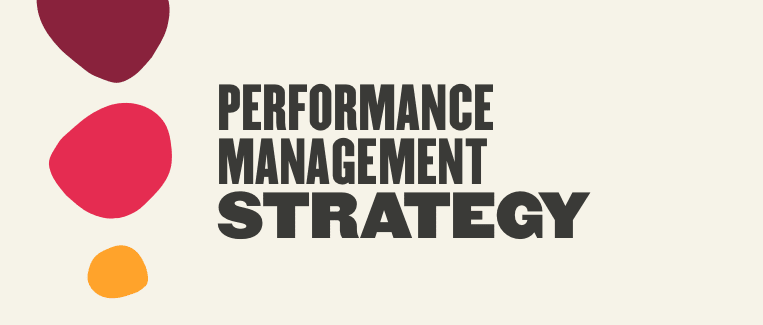Performance reviews of the past were traditionally limited to a once-per-year appraisal where employees were judged according to past performance. With end-of-year reviews often tied to financial bonuses, promotions, or other incentives, this model was found to cause anxiety and competition among employees, thereby limiting collaboration and innovation.
But things are changing. Continual performance management is increasingly being adopted by the world’s biggest companies. By keeping communication about goals and objectives fluid, effective performance management fosters engagement and breaks down silos for enhanced productivity and long-term success.
So, how can HR leaders lay the foundations for successful performance management?
Before getting started
Don’t just dive right into implementing a performance management system. Take a moment to think about what your organization is trying to accomplish, what your culture is, and where there is room for improvement.
- Self-audit
Understanding and evaluating current performance management practices is vital to find out what your people need to stay on target, pinpoint any gaps or challenges, and find concrete solutions. Ask your employees what they think using anonymous surveys.
- Pick a direction
If executive leadership isn’t confident about company goals, this uncertainty will trickle down and damage productivity. Before propelling performance, first achieve cross-organizational alignment on targets and objectives.
- Break it down
Once your organization has outlined higher level goals, translate these into actionable, measurable departmental goals. This gives managers clarity about expectations that in turn empower them to effectively manage their teams.
- Train your leaders
Keep your managers on the ball and empowered to take an active role in performance management with ongoing training. When managers are given the skills to set clear objectives, evaluate performance, and offer feedback in an effective manner, organizations can benefit from up to 15% greater productivity.
Performance management strategy
With the groundwork completed, the next step towards implementing a performance management system is outlining a concrete strategy identifying how performance management will actualize employee potential and support enhanced productivity.
1. Align individual objectives with organizational and departmental goals
The purpose, values, and goals of each unit or department of the organization should support or relate to the purpose, values, and goals of the organization. With these in place, managers can effectively determine what each employee’s individual contribution will be.
This structure creates transparency so that every person knows what they are supposed to be doing and why they are doing it. This alignment will create a situation where each time that a goal is achieved, the organization moves forward and individual efforts are recognized.
Setting periodic departmental strategy meetings will ensure continuous alignment by giving managers, department heads, and other stakeholders the opportunity to sync up and evaluate progress.
Managers can then communicate any insights or changes to their teams, ensuring that every member of the organization is acting in tandem.
2. Set standards, criteria, and indicators
Understanding how one’s work contributes to organizational success is vital, but employees also need to understand how they are being evaluated individually. If there are any incentives attached to performance milestones, these should likewise be clearly outlined.
Transparent management is vital to the credibility of any performance management process. This entails setting clear standards and indicators — individual deliverables should be designed according to the SMART acronym: Specific, Measurable, Achievable, Realistic, Time-bound.
Beyond evaluating an employee’s hard skills, performance management should clearly include goals guided by soft skills. The intangibles are no less important, and may even be more important, than technical skills.
3. Choose the right evaluation method
There are a variety of different performance management methods to choose from, depending on the industry, department, or individual role. On the surface, each method lists a number of behaviors, skills, or objectives that the employee is being evaluated on, and a numeric or descriptive scale to quantify the employee’s level of performance.
Some examples of performance appraisal methods include:
- Management by Objective (MBO)
- Critical incident method
- Checklist method
- 360-degree performance appraisal
- Competency-based
- Graphic rating scale (GRS) appraisals
Regardless of the method you choose, it’s important that these standards are transparent, communicated to employees, and consistently applied across the entire organization.
4. Build performance management into the business planning cycle
Performance management, when done right, will galvanize every member of an organization to accomplish clearly outlined objectives that contribute to larger goals and corporate objectives. In this sense, it’s vital to incorporate performance management into the business planning cycle.
Make room for employee development, manager training, periodic reviews, and other performance management activities among revenue targets and cost of acquisition goals.
5. Ensure clear communication
If your people don’t know what the performance management system is and how it fits into the organizational structure, they won’t be motivated to contribute. Successful performance management depends on the engagement and involvement of all employees, so good communication is vital.
Be clear about what your performance management process is seeking to achieve, how it will operate, how objectives will be set, what criteria will be used for evaluating performance, and whether compensation is involved.
Recommended For Further Reading
6. Monitor and review
The best way to ensure that any performance management system is successful is to stay on top of the data. Is retention up? Are employees meeting their individual objectives? Are these propelling departmental and organizational goals?
Using an online performance management platform will give you control over performance data, metrics, and employee feedback. Review this information and share insights across your organization to celebrate achievements—or leverage this knowledge to swiftly make any necessary changes.
Conclusion
Performance management can help employees become more productive, develop new skills, and take an active part in promoting organizational goals. Effective performance management can also help organizations improve processes, systems, and procedures towards greater efficiency and growth.
But first, HR leaders must provide the basis for the system by evaluating the current state of affairs and designing a winning performance management strategy.


